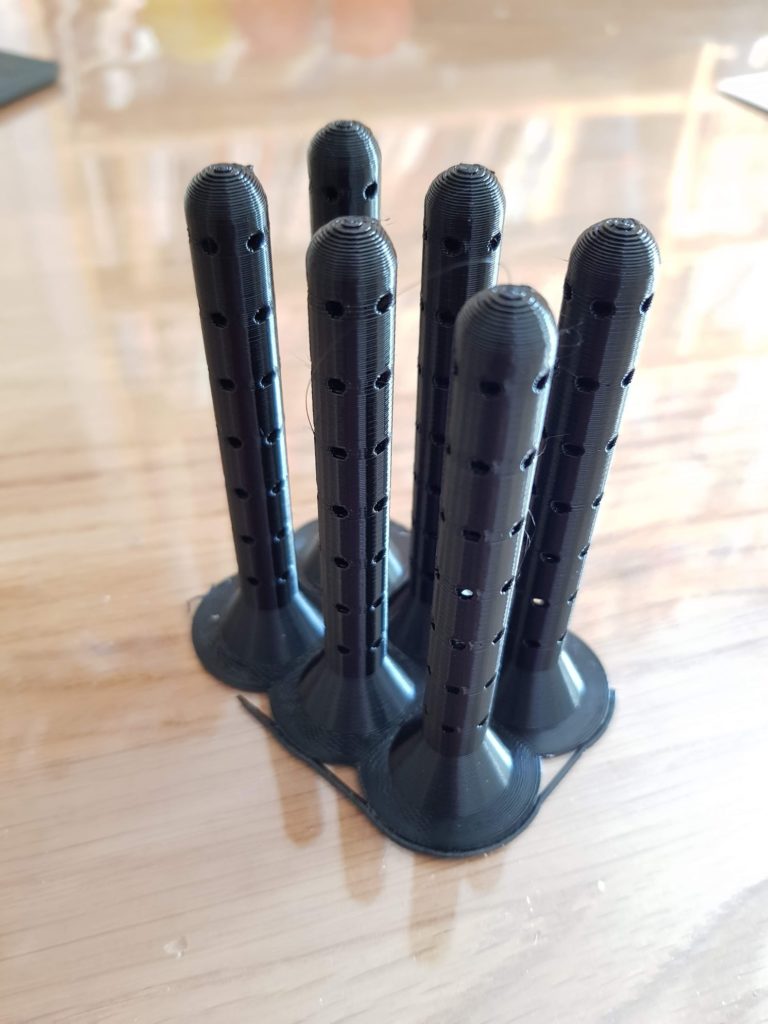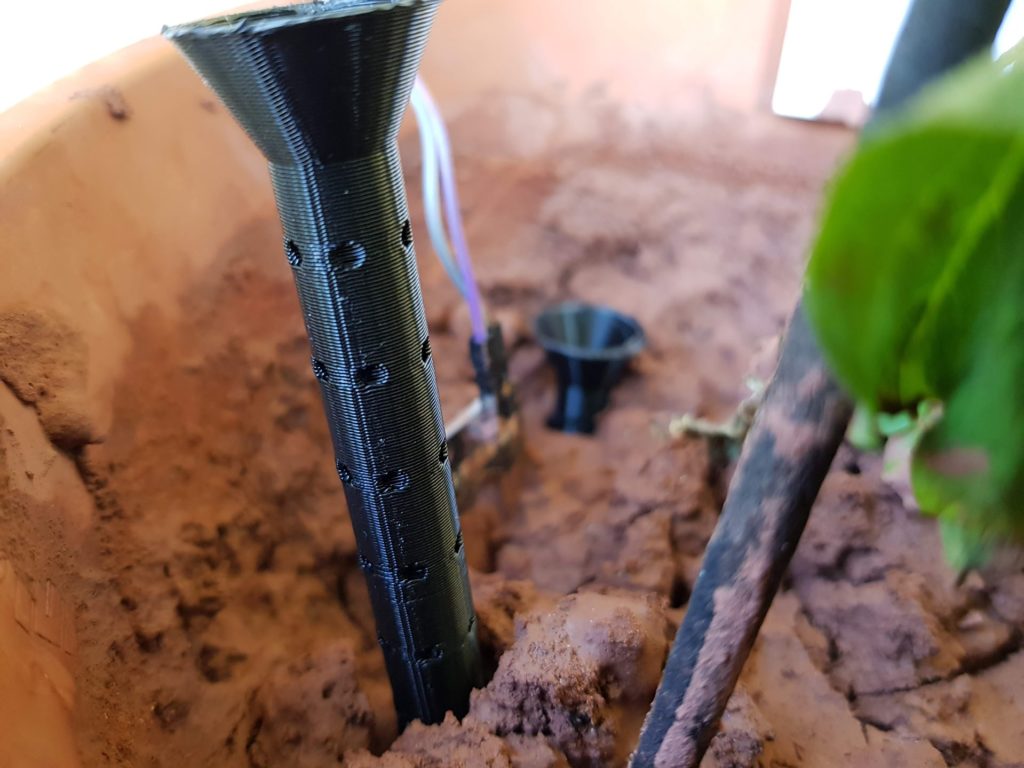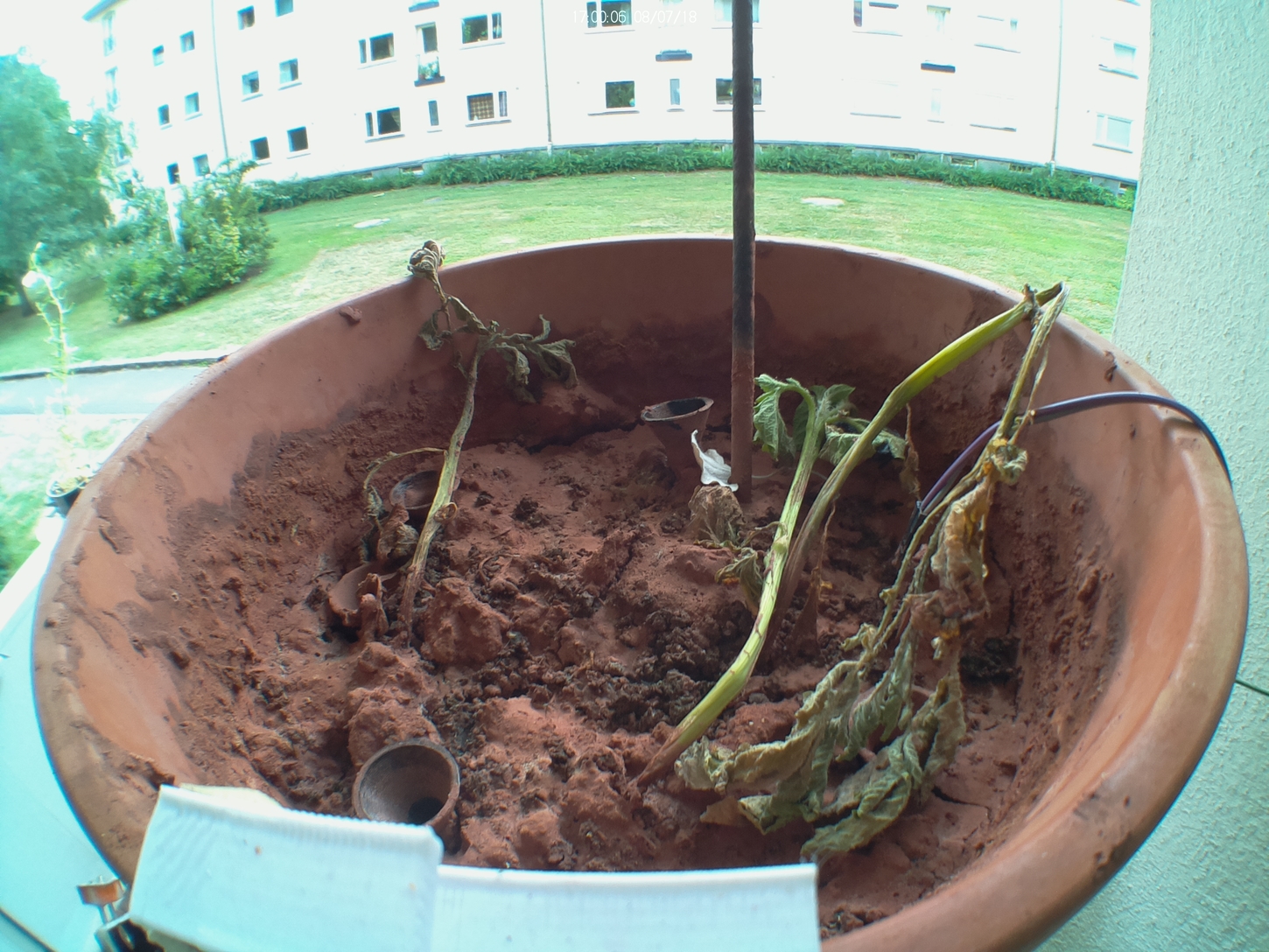
Experiment terminated on august 7, 2018
Updates
August 7, 2018: The potato plant finally died and the experiment has been terminated. The picture above is the last picture taken by the automatic camera, the video is a timelapse of the plant’s last week. Dismal stuff.
July 31, 2018: After a last-ditch attempt at reviving the plant, using chicken manure and water, the trend is still clear. Expect to see an «autopsy» here soon!
July 26, 2018: My 3D-printed tubes haven’t done much good, sadly. The potato plant is hanging on, as the video below shows. But it is fading with every passing day, and it is only a matter of time now. The heatwave we are having now is surely not helping.
July 19, 2018: In an attempt to rescue the potato plant, I have 3D printed hollow tubes with holes in them and inserted them into the now very dense regolith. This is my last-ditch attempt to simulate the aeration created by burrowin earthworms. Also, the funnel shape will make it easier for water to penetrate deeper into the soil.
July 16, 2018: The potato is still wilting. The video below seems to confirm that overwatering (seen 19 second into the video) is the cause, perhaps in combination with extreme heat.
July 15, 2018: The potato seems to be wilting. A probable cause is the lack of a soil moisture sensor for ten days, which might have led to under- or overwatering. The pot has been moved to a spot where it is easier to look after it, will be offline while this is ongoing.
July 13, 2018: A new Particle Photon unit is now gathering data again. See diagrams below.
July 12, 2018: Made a timelapse of the potato plant’s first week.
July 7, 2018: Planted a second potato from the same batch in earth-type potting soil. Will serve as a control for the rate of growth etc.
July 4, 2018: The potato plant makes its first appearance at 8 AM.
July 3, 2018: The Particle Photon microcontroller that managed my trio of sensors (light, air temperature and soil moisture) suddenly died. A new one has been ordered.
Background
What you see above is a flowerpot in Oslo, Norway, containing five pounds of simulated Mars soil and a potato. Inspired by the character Mark Watney in Andy Weir’s novel «The Martian» (later made into a brilliant movie featuring Matt Damon as Watney), I am trying to grow potatoes under very basic Martian conditions. Like the fictional character, I am growing a food potato in Mars-like soil using only purely organic fertilizer. In the book, Watney uses freeze-dried feces from the Mars habitat’s toilet, for obvious reasons I substituted this and used chicken manure instead!
In my previous experiments with Mars regolith (watercress and barley, as seen in these two timelapses) I grew my plants indoor using artificial lighting, but as it is summer and chicken manure is smelly I am doing this outdoors. In addition to taking pictures every half hour 24/7, I will also be collecting data. I am monitoring the humidity levels using a soil moisture sensor, this is especially important when dealing with soil as dense and clay-like as watered regolith. I also measuring air temperature and light intensity.
The setup in pictures
Me experimental setup is simple enough: 2,3 kilos (5 pounds) of simulated Mars Regolith purchased online, mixed with about 100 grams (4 ounces) of chicken manure in a standard terracotta flower pot. The pot has room for one potato plant, I chose not to use a certified seed potato to stay a bit closer to the narrative in «the martian».
In Norway it is illegal to use food potatoes for seeding because of the risk of spreading potato disease. But as my experiment takes place in downtown Oslo, at least 10 kms (6 miles) from any farm, that risk can be safely ignored. Anyway: I prepared my potato by leaving it in the windowsill for a few weeks, until it started to sprout roots. I then planted it about 7 centimeters deep, before covering it with regolith.
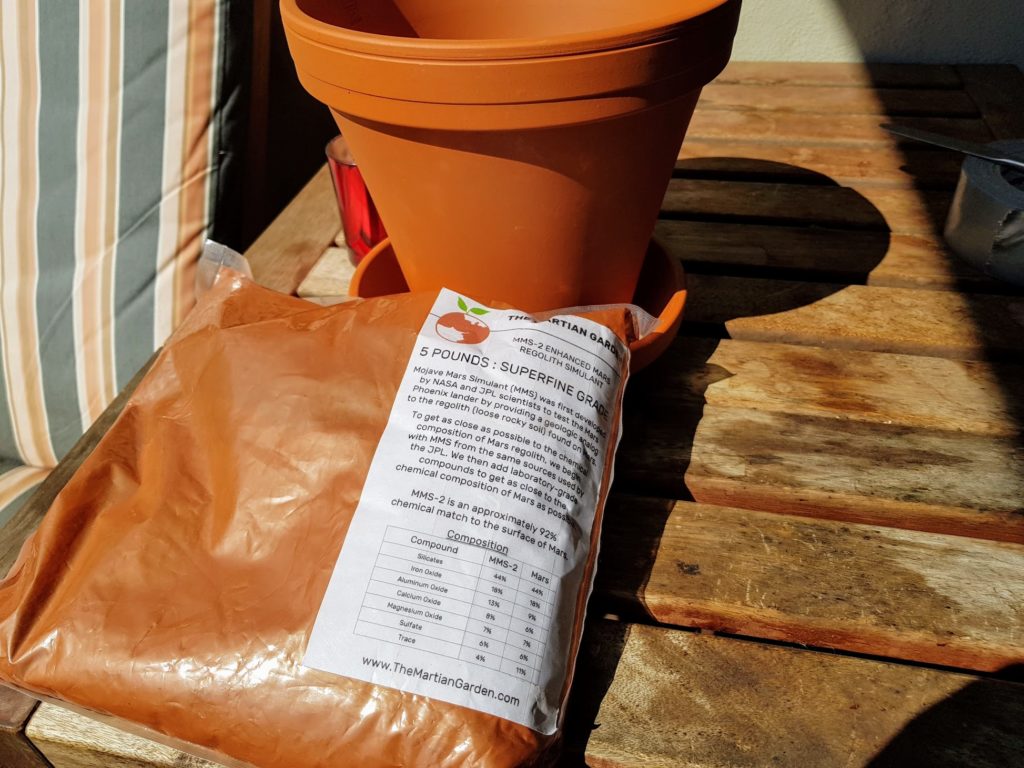
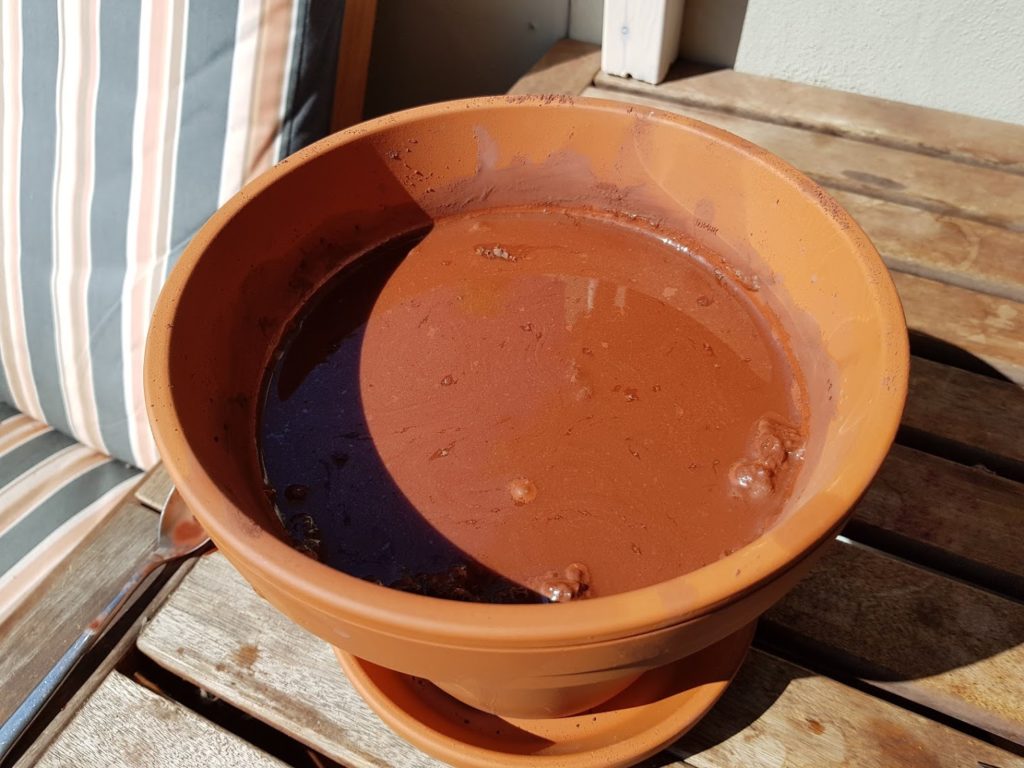
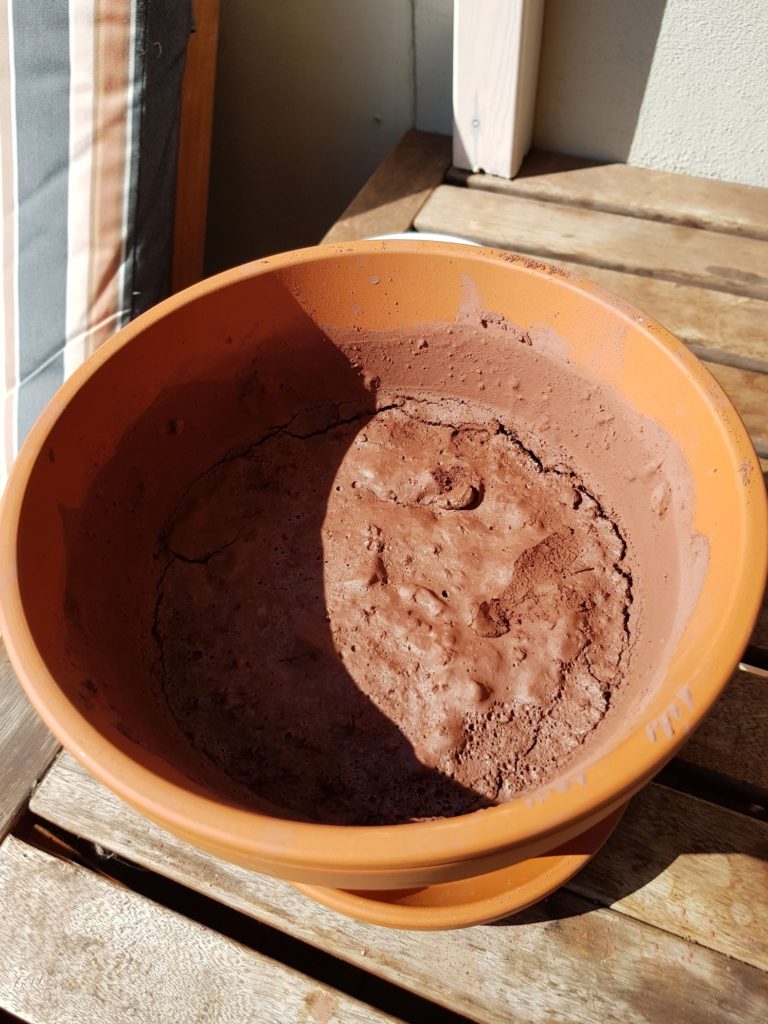
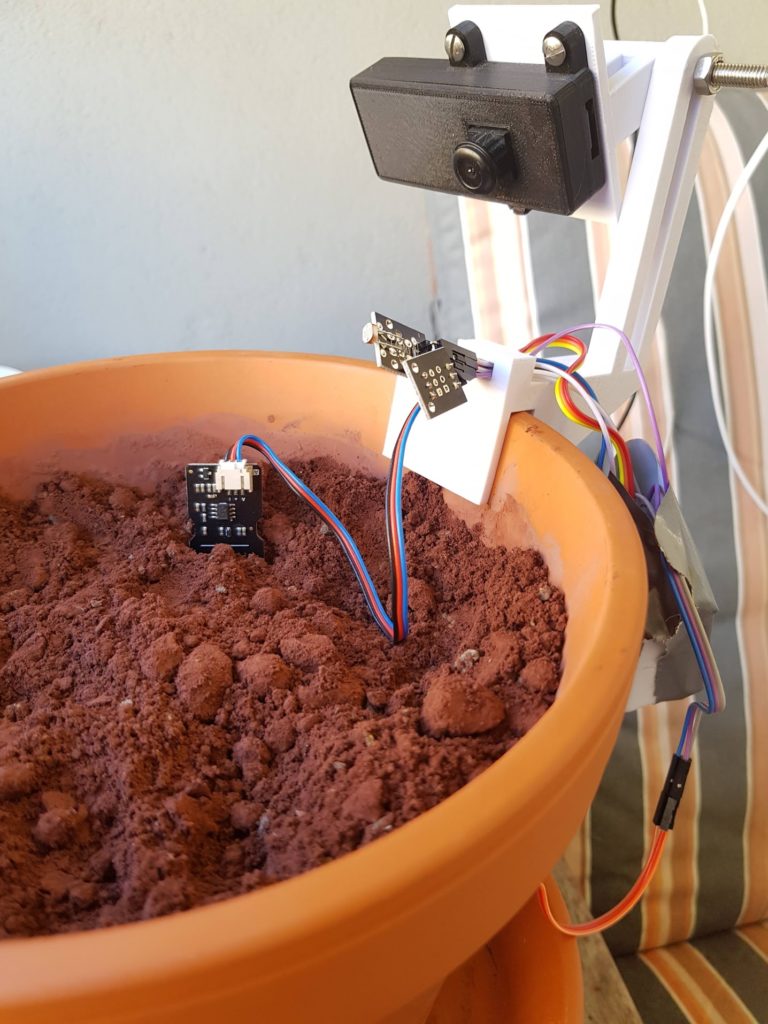
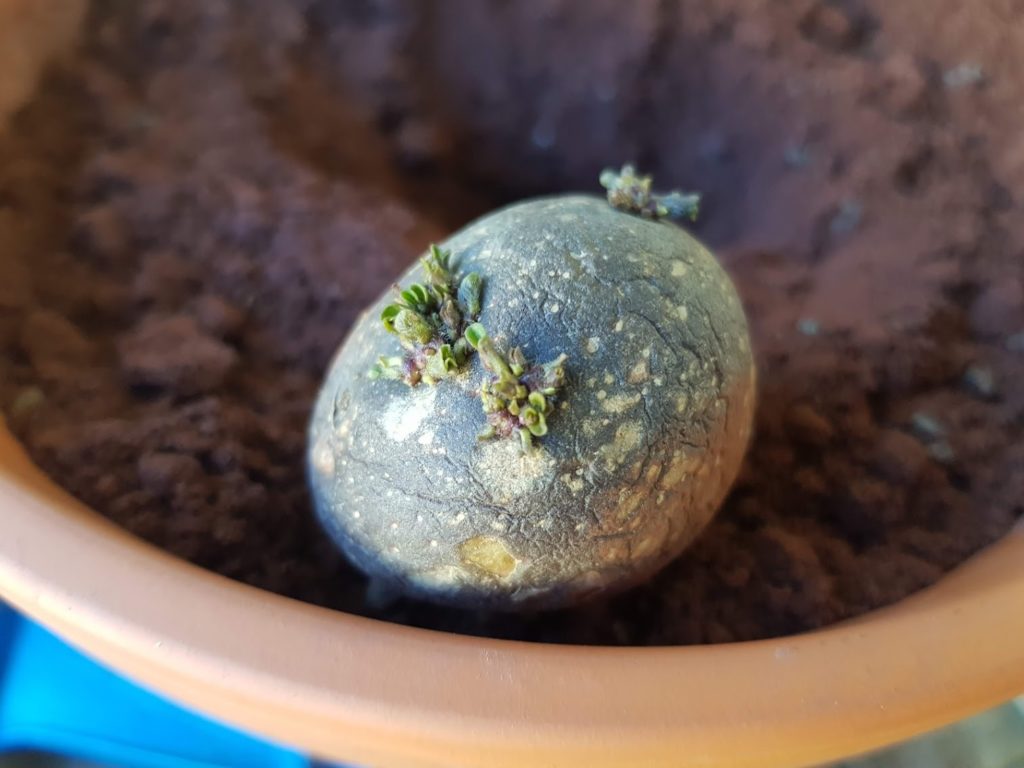
External links
Learn how to set up your own webcam using a Raspberry Pi computer
